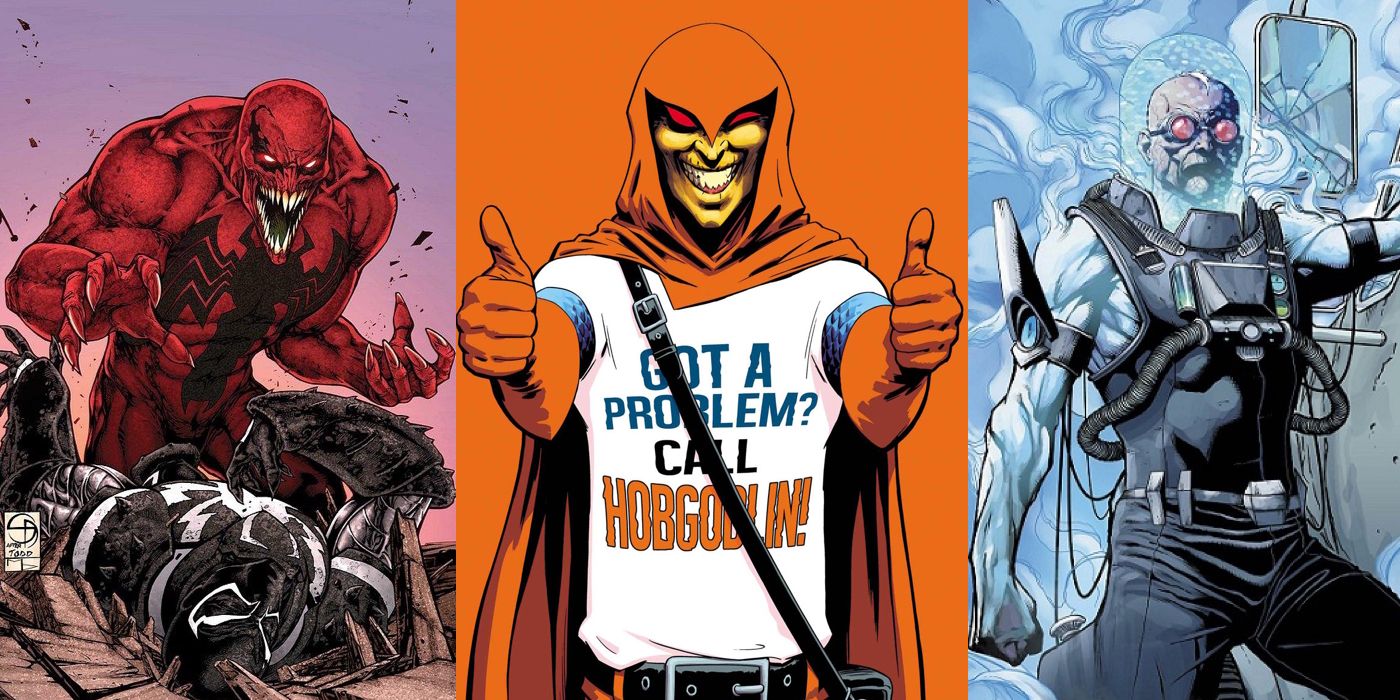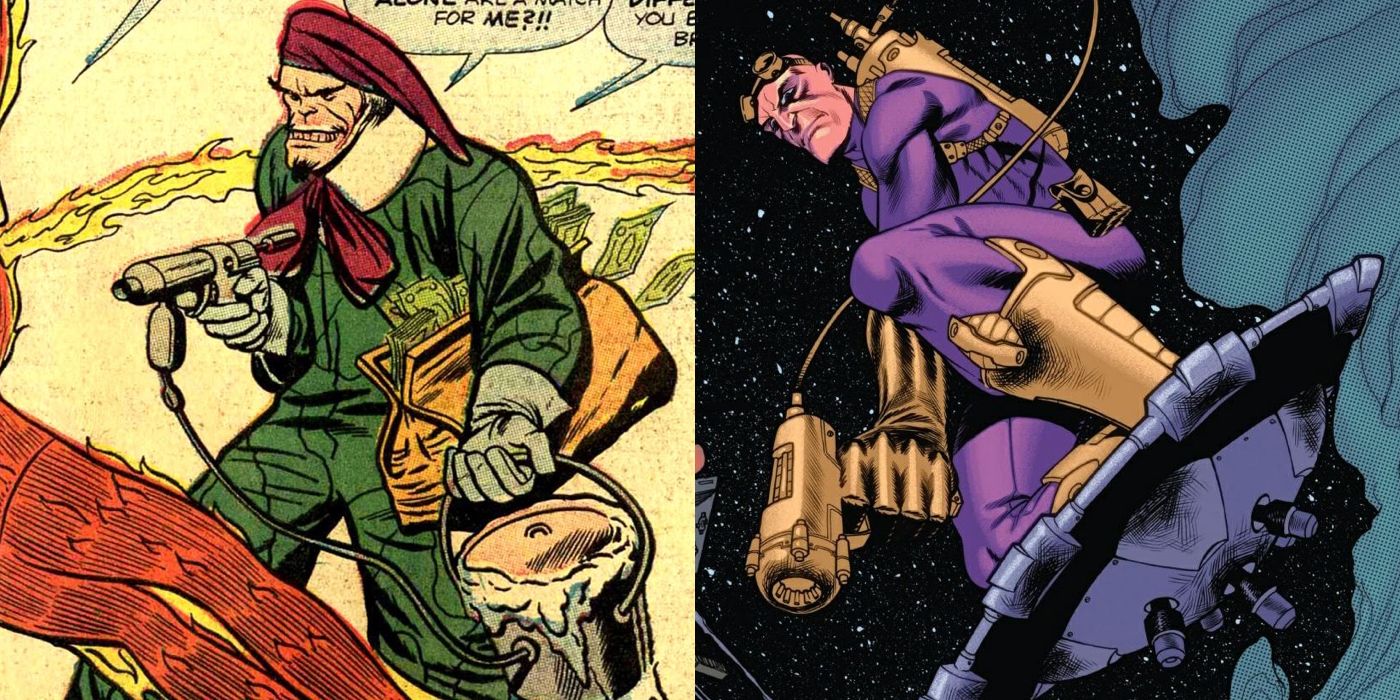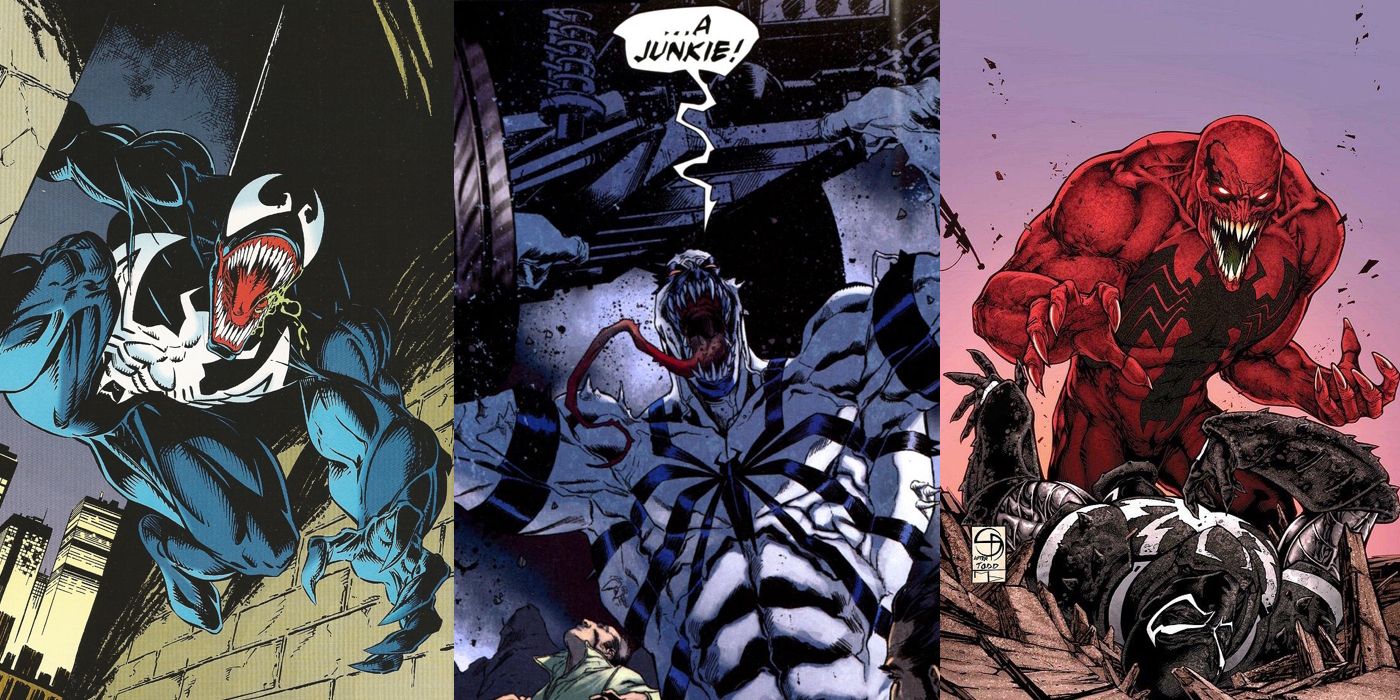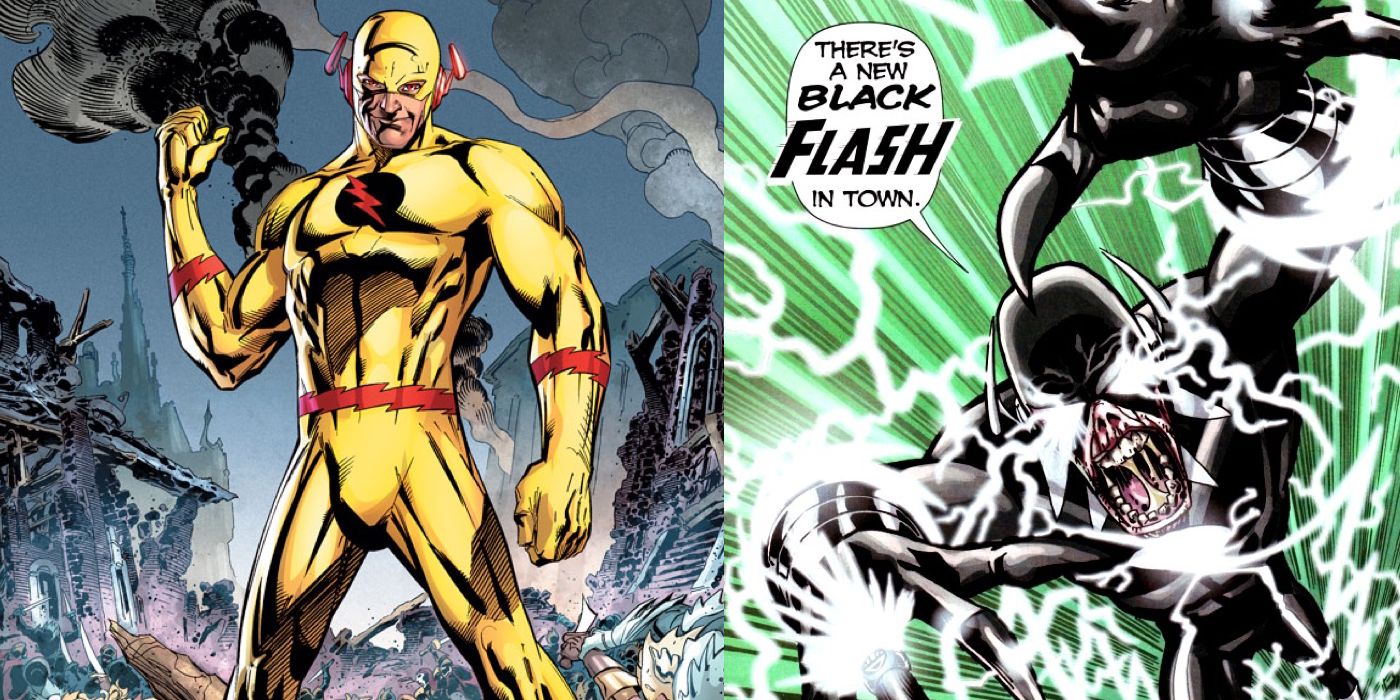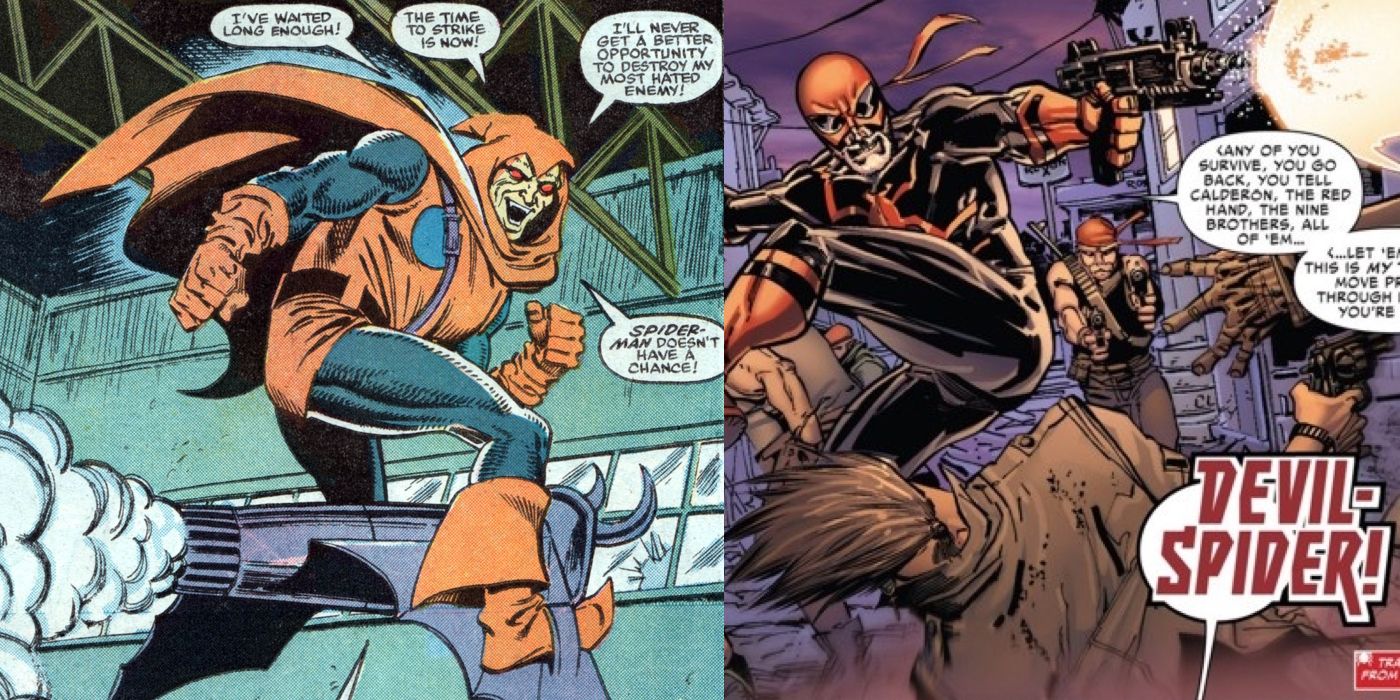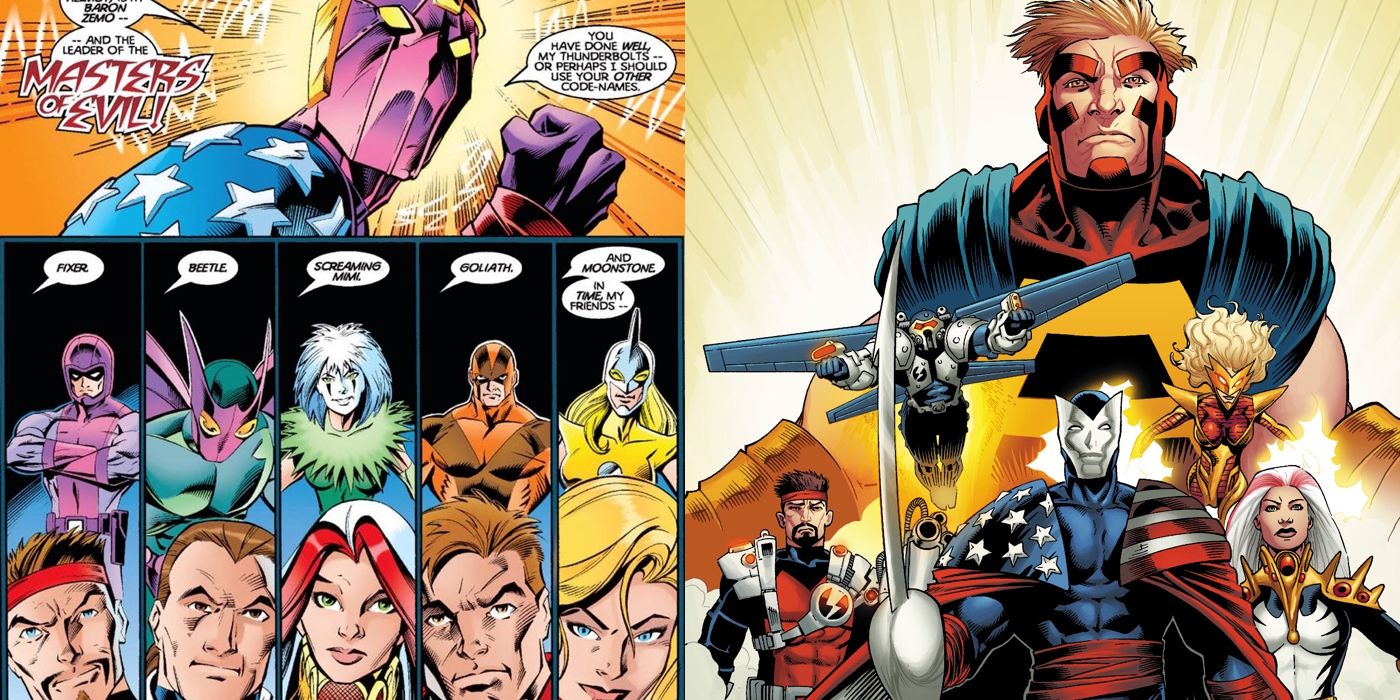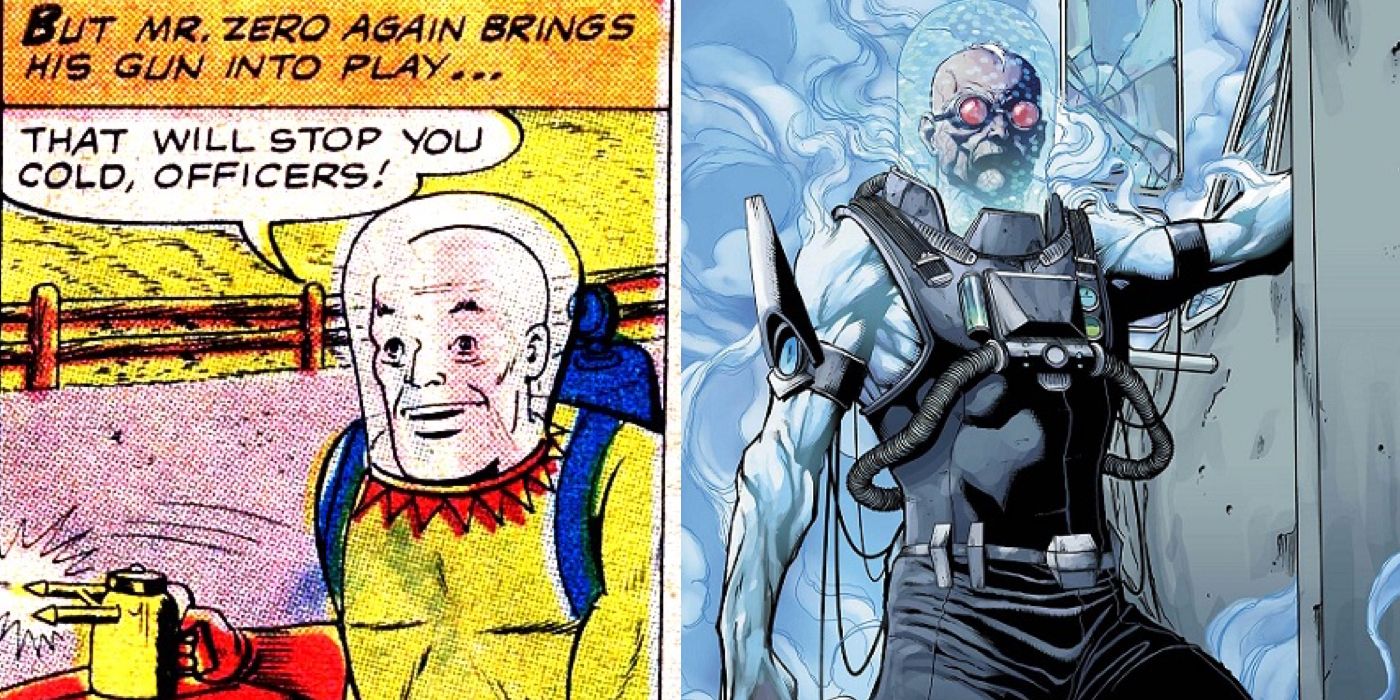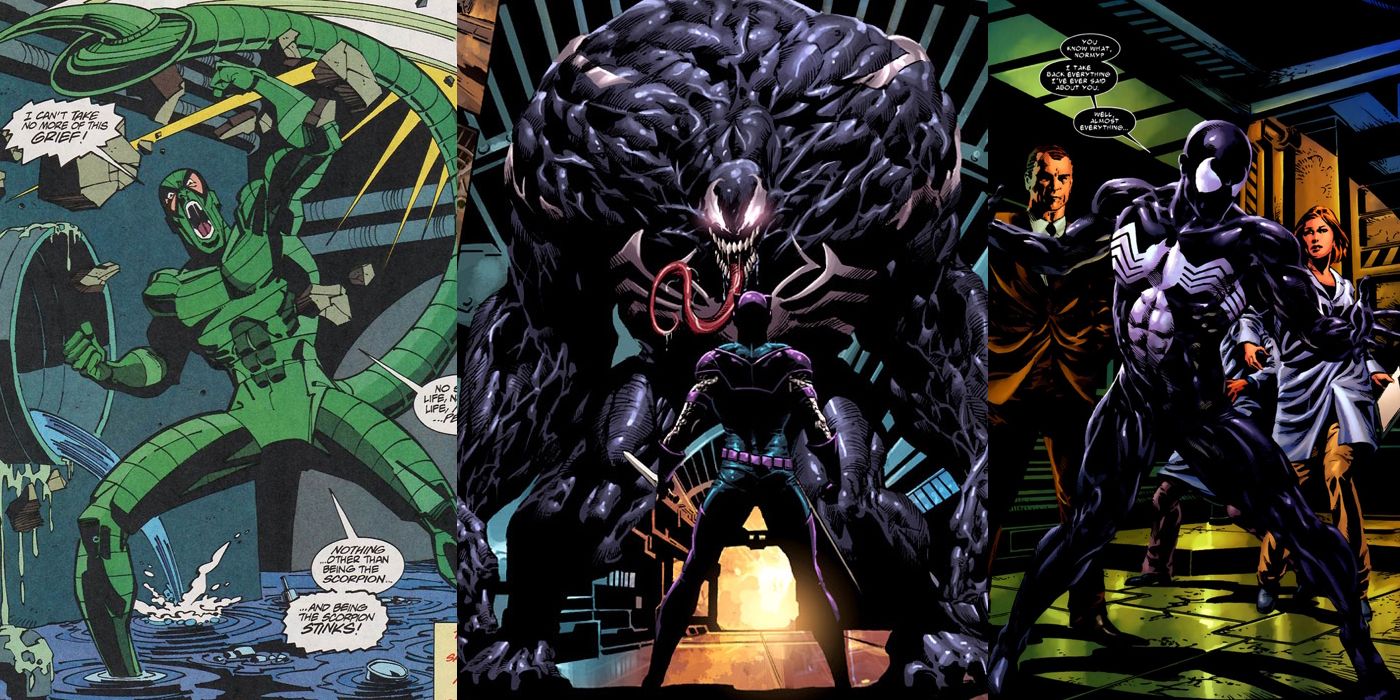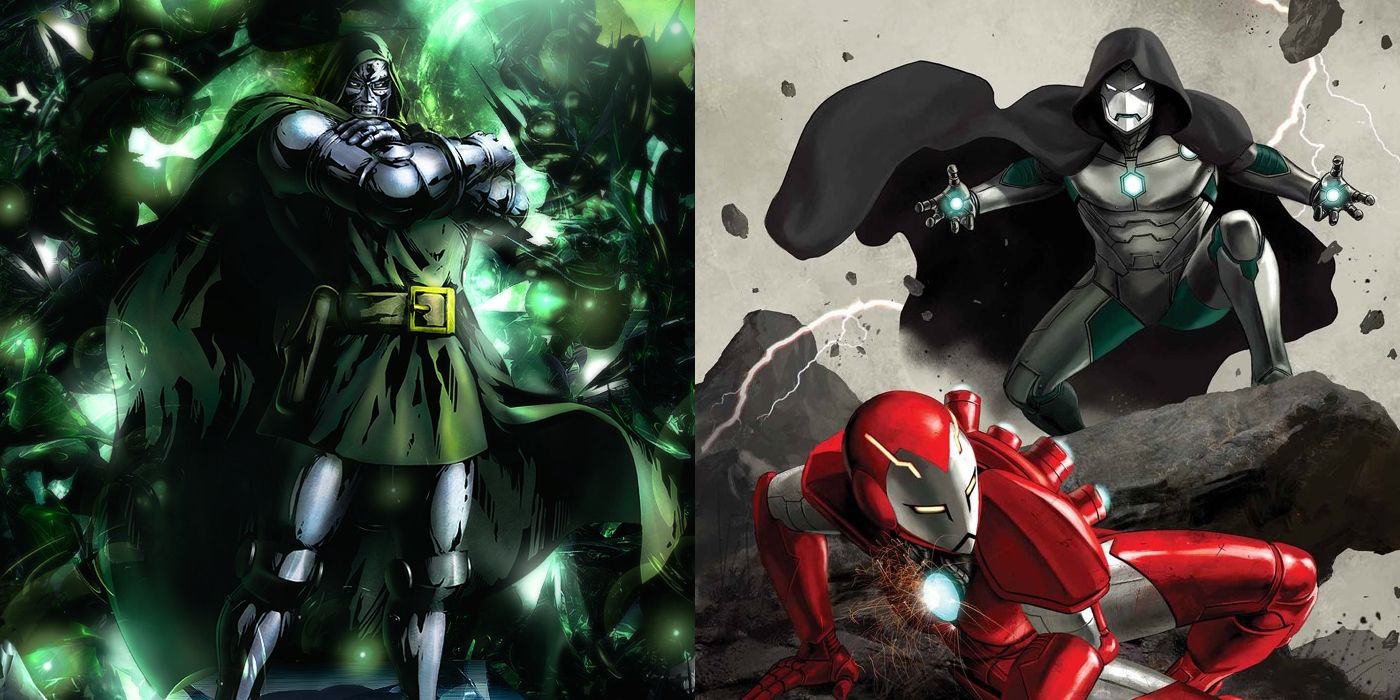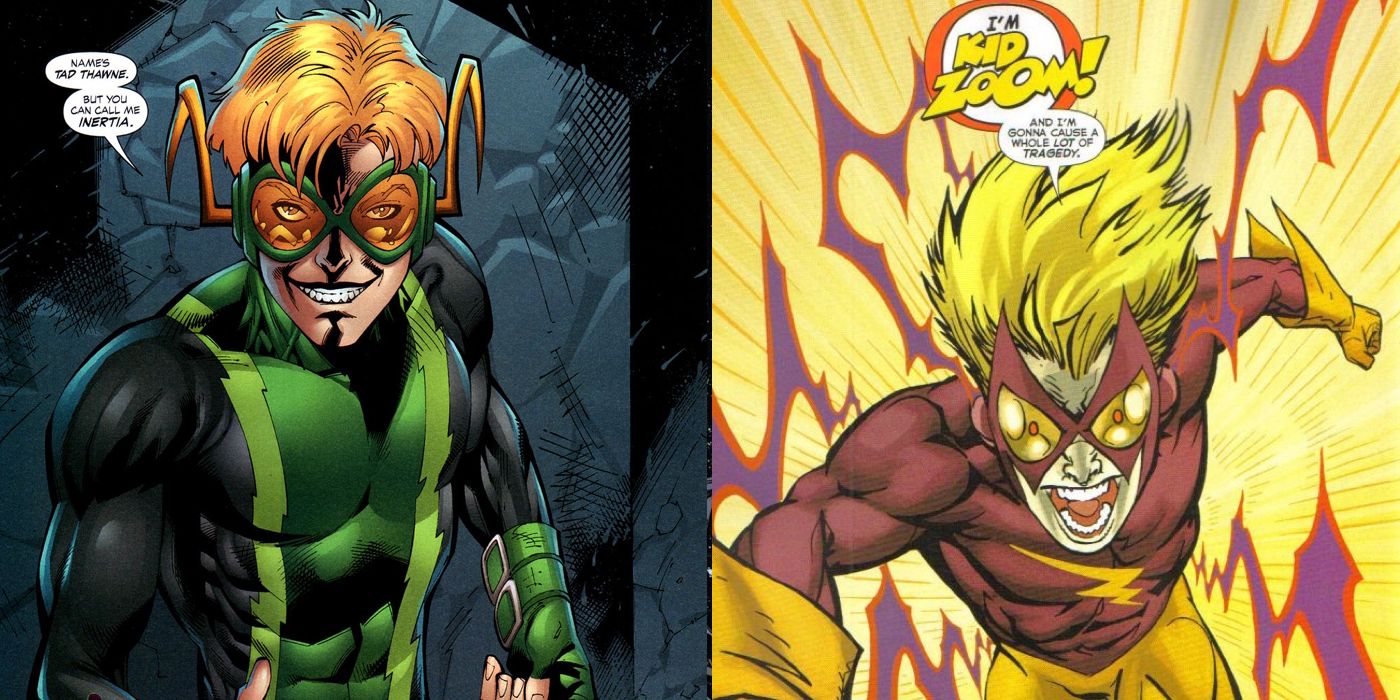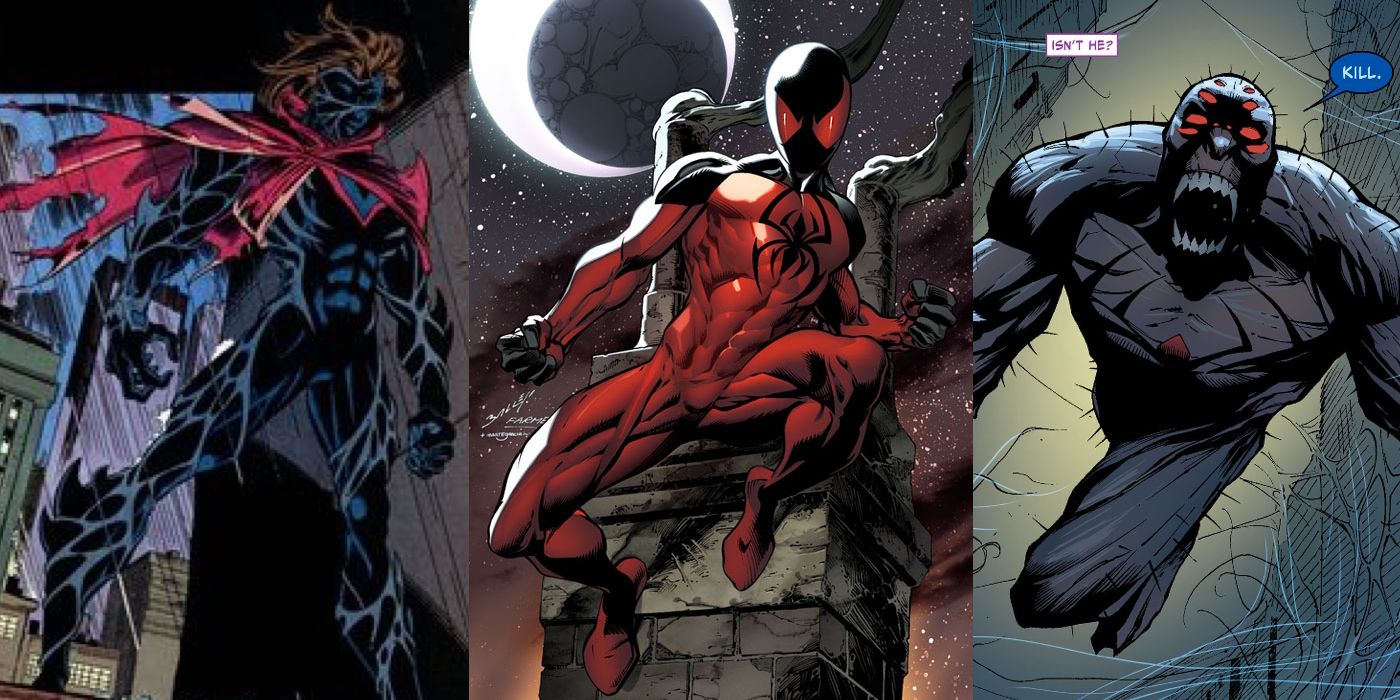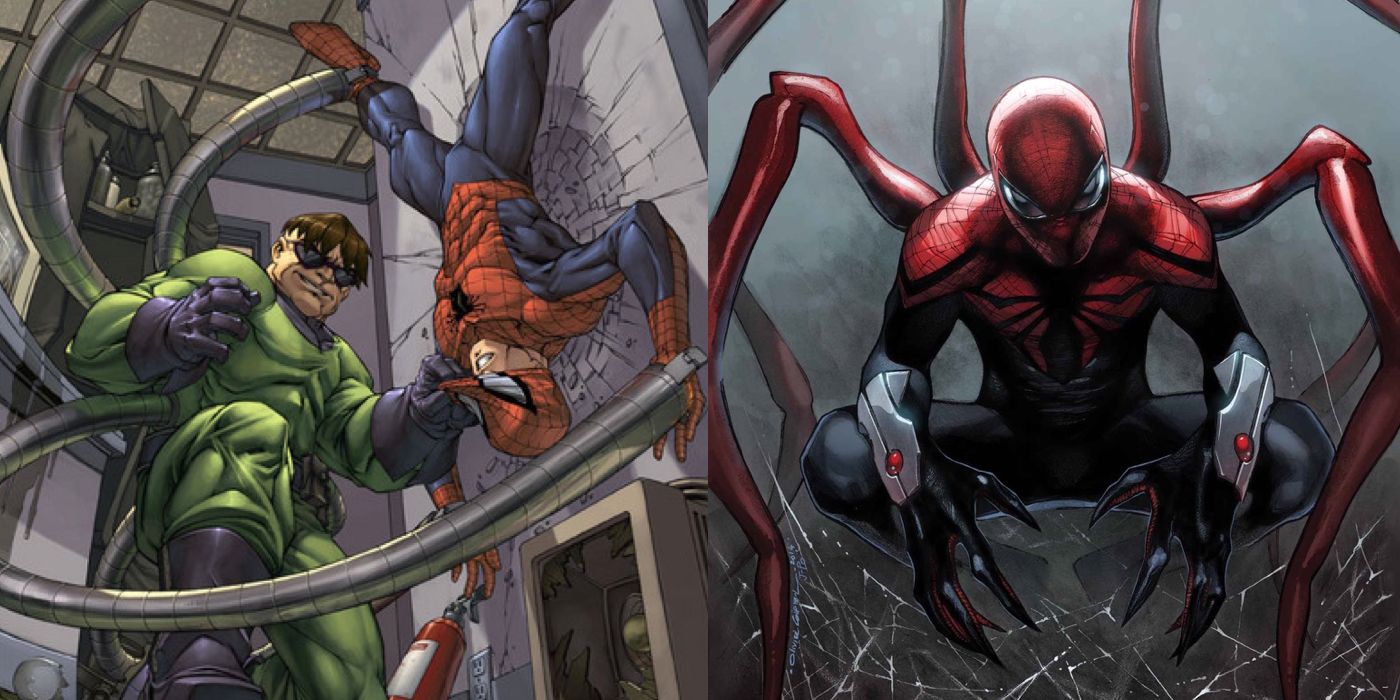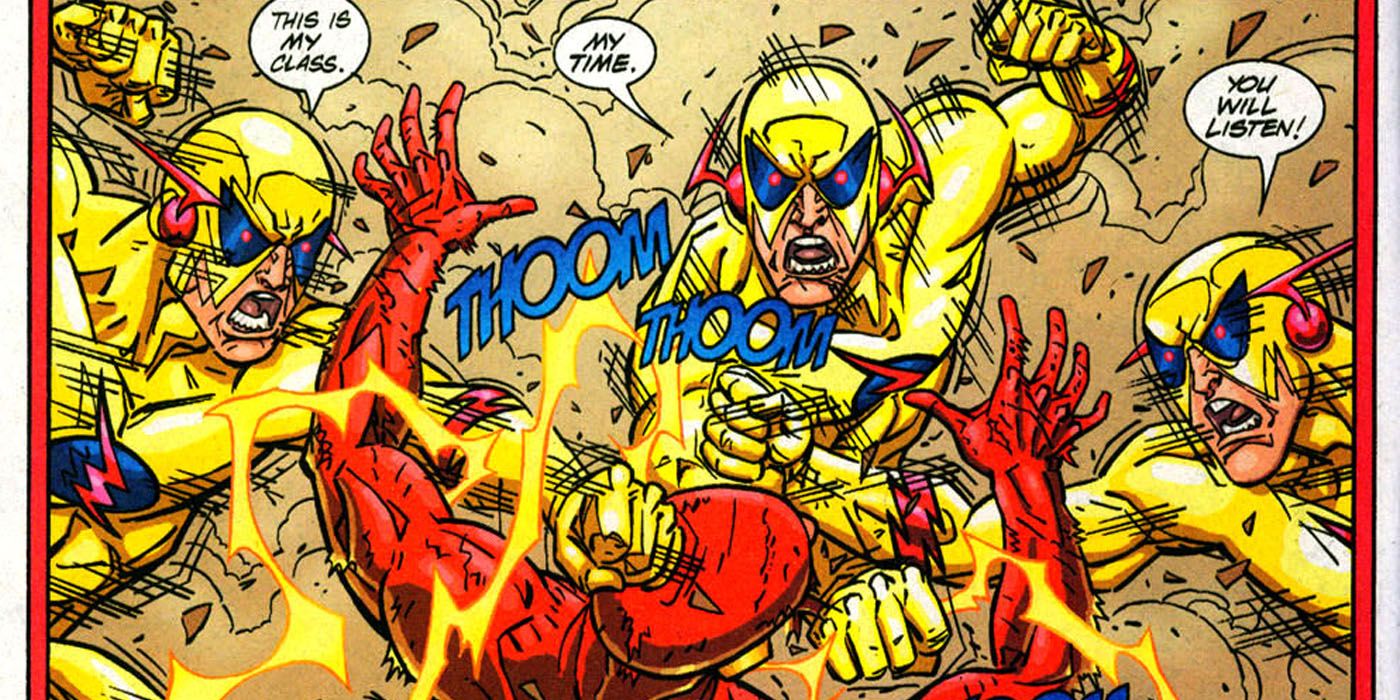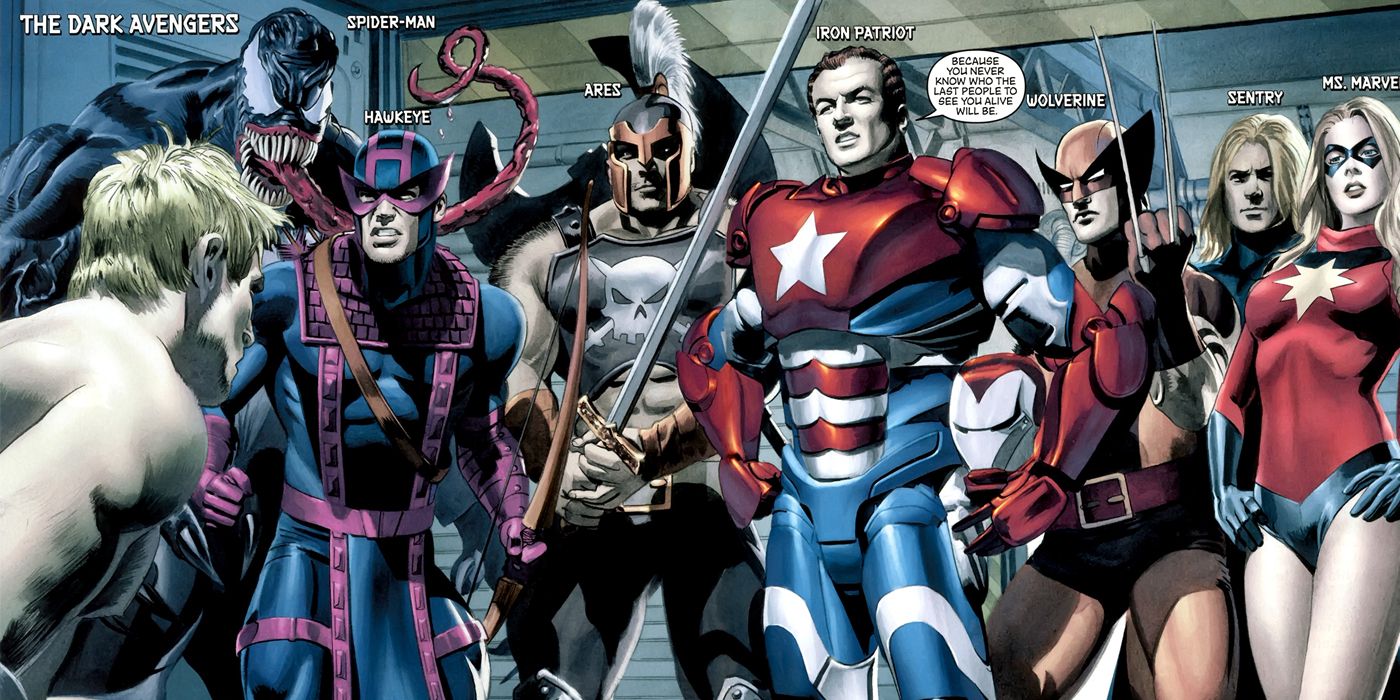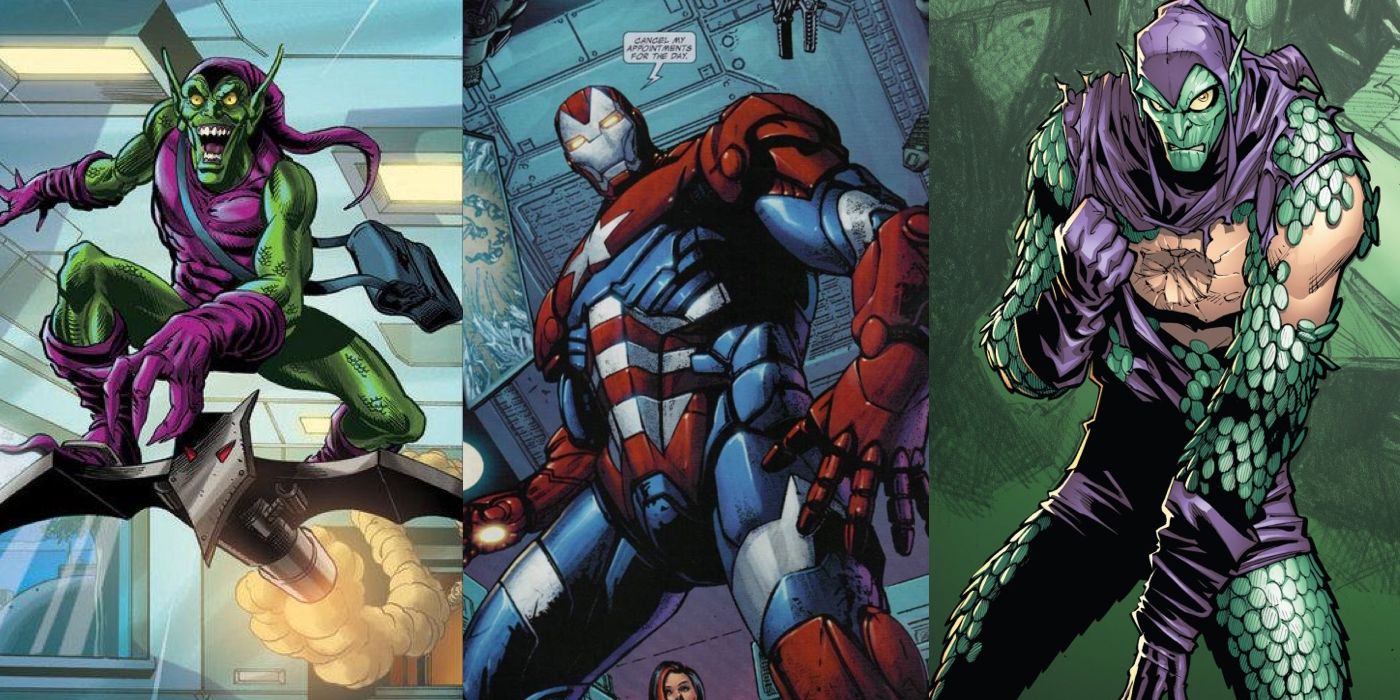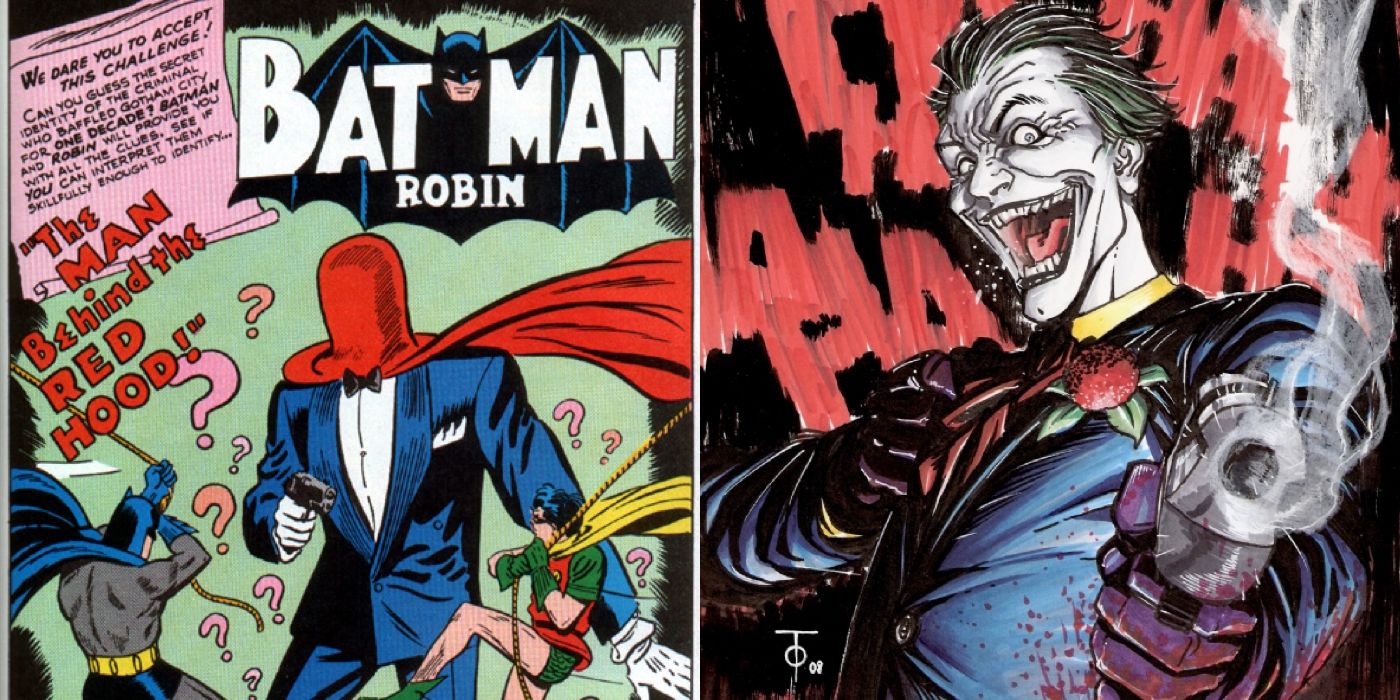Across the vast wilderness of comic book continuity, change is inevitable. Though many fans get up in arms when publishers like Marvel and DC change the person behind a particular mask or identity, the practice of superheroes assuming new names and passing their old costumes on is an idea as old as comics. Recently, we highlighted just how common it is for legendary superheroes to change their names, but it’s not just the wholesome comic characters that are fickle about their monikers.
Supervillains operate along many of the same principles as heroes, often moving from costume to costume with their old identities picked up by others along the way. In same cases, entire supervillain teams are built on the idea of crafting new personas (or stealing them from heroes). Even the most nefarious and bloodthirsty baddie can get the rebranding itch, so here are 15 Iconic Supervillains Who Changed Their Names.
15. Peter Petruski / Paste-Pot Pete / The Trapster
Peter Petruski’s supervillain name change might be one of the more self-aware moments of comic book writing. When the character appeared as a glue-wielding rogue in 1963’s Strange Tales #104, he didn’t really pose much of a threat. He mostly had a personal vendetta against Johnny Storm, fighting the Human Torch on a number of occasions. Oddly, for an era chocked full of ludicrous character names, even Paste-Pot Pete was too silly for Marvel to stomach.
During a particularly embarrassing battle against the Torch and Spider-Man, Pete was unable to even get the fight going as Spidey couldn’t stop laughing at his name. Instead of reassessing his whole M.O., however, Pete decided to keep the gimmick but pick a slightly less goofy name.
After teaming up with the Wizard, Sandman, and Inhuman queen Medusa (then a villain) to form the Frightful Four (itself hardly an intimidating title), Pete changed his name to Trapster only 3 years after his debut in Fantastic Four #38. Though only marginally more nefarious sounding, Trapster has remained Pete’s chosen title since. Of course, even after all these decades, Spidey still mocks the villain by using his original name.
14. Eddie Brock / Venom / Anti-Venom / Toxin
On the complete opposite end of the supervillain spectrum from Paste-Pot Pete is the original Venom, Eddie Brock. Though Brock has served as more of an anti-hero a number of times, his murderous nature usually rises to the surface.
Debuting in full in The Amazing Spider-Man #299 in 1988, Brock is a journalist about to catch his big break by revealing the identity of a serial killer. His career is ruined, however, when Spider-Man catches the real murderer, driving Brock close to suicide. As luck would have it, his depression leads him to Spidey, caught in the act of shedding his black suit. Sensing Brock’s anger, the Symbiote bonds with him and the two become Venom.
Venom and Brock would both bounce between somewhat heroic villain and violent anti-hero for the next two decades. After getting cancer and reforming a bit, Brock is healed by the powers of Martin Li. When the Symbiote returns and tries bonding with Brock, it mixes with Li’s energy and creates Anti-Venom. As Anti-Venom, Brock once again becomes a ruthless hero, now with the power to burn other Symbiotes and negate certain powers.
After a rampage where he kills a number of errant Symbiotes, Brock is kidnapped and forced to bond with the Toxin Symbiote by Crime Master. Though it at first drives him crazy, Brock is able to gain control of the Symbiote and return to his anti-hero ways.
13. Eobard Thawne / Professor Zoom / Reverse-Flash / Black Flash
If you’re a fan of The Flash TV show, but not familiar with the comics, you may be confused by all the villainous speedsters running around and swapping identities. Don’t bother looking to the comics for clarification, though, because it’s ten times more confusing. Virtually every speedster in DC Comics has had at least one Speed Force user as a villain.
Confusingly, both the heroes and villains seem to stick to a set of names. Just as there are multiple Flashes and Kid Flashes, there are lots of Reverse-Flashes and Zooms. The first of both, however, was Eobard Thawne. Like in the show, he’s from the future and has dedicated himself to destroying the Flash, because he feels it’s his destiny.
Debuting in The Flash #139 in 1963, Professor Eobard Thawne hijacks a bunch of Flash gear from the future and becomes the criminal speedster Professor Zoom (sometimes just Zoom). After being defeated by Flash, he grows obsessed with taking his place.
It’s later retconned that Thawne was originally a huge Flash geek, and only became a villain when he saw in a museum that he was destined to be the Flash’s greatest foe. How’s that for a paradox?
He eventually adopts the awkward name Reverse-Flash, but uses both of his names fairly interchangeably. He even took the mantle Black Flash during Darkest Night when he gained the power of the Black Lantern ring. Hopefully, if Green Lantern ever joins The Flash, we can see that play out on screen.
12. Roderick Kingsley / Hobgoblin / Devil-Spider
Roderick Kingsley’s own identity swap isn’t super interesting, but what he does afterward makes him the king of supervillain name changes. Kingsley was introduced in Peter Parker, the Spectacular Spider-Man #43 in 1980, three years before he would become the Hobgoblin in The Amazing Spider-Man #238. Though his identity was a subject of much debate for years, both in the comics and outside, it’s been befitting of the character. He often uses patsies to fill in for him, and like the Green Goblin, the Hobgoblin persona has been used by a number of people.
During one such event where Kingsley was “killed” by Phil Urich, it turned out his brother Daniel was actually the one who'd died. This called back to his origin, when his brother would often impersonate him. While Urich took the Hobgoblin mantle, Kingsley became Devil-Spider and ran a criminal empire in Ecuador. Upon news of his brother’s death, he returned to New York and began the business of selling old supervillain identities and equipment to new heroes in one of the most dastardly franchise operations ever.
Just a few of the many new versions of old villains that Kingsley rented out were Hydro-Man, Killer Shrike, Unicorn, 8-Ball, Tiger Shark, and Beetle. It’s one of the more meta and clever moments in comics, proving that Kingsley is the master of super-identities.
11. Thunderbolts
Nowadays, the Thunderbolts are essentially Marvel’s answer to the Suicide Squad, but like that group, they used to be considerably different. First appearing in The Incredible Hulk #449 in 1997, following the deaths of the Avengers and Fantastic Four in the “Onslaught” event, the Thunderbolts stepped into the hero hole left by the titans.
The original lineup consisted of Mach-I, Techno, Meteorite, Atlas, and Songbird, all led by Citizen V. Soon, however, it was revealed that the whole group was a ploy concocted by Baron Zemo to gain the public’s trust before pursuing their criminal activities. Citizen V was actually Zemo, and each of the other “heroes” were various C-list supervillains. In actuality, they were Beetle, the Fixer, Moonstone, Goliath, and Screaming Mimi, respectively.
Eventually, many of the villains turned on Zemo and began fighting for good, with Mach-V (who’s been through several upgrades) and Songbird both keeping their new names and helping Luke Cage during his more recent stint as the Thunderbolts’ leader. Though the group is now just about rehabilitating criminals, their origin as an entire team of name-changing supervillains will always be their greatest legacy.
10. Victor Fries / Mr. Zero / Mr. Freeze
Like Peter Petruski as the Trapster, Dr. Victor Fries has kept the name Mr. Freeze for decades, after premiering under a slightly different moniker. His reason for changing it, however, is even more meta. Debuting in 1959’s Batman #121 as Mr. Zero, the ice-themed villain was originally not much of a threat and served more as a campy rogue for the Dark Knight. Due to his colorful and cartoonish nature, he was drafted to appear in the Batman TV series as a villain starting in 1966, where the producers changed his name to Mr. Freeze. It proved so popular that, in 1968’s Detective Comics #373, the writers followed suit.
Even as Mr. Freeze, the character still remained a somewhat silly and low-level Batman villain for the next few decades, until TV once again intervened. This time, it was the groundbreaking Batman: The Animated Series of the ‘90s, which updated the backstory of Freeze into the sympathetic villain many now know. He was given a tragic origin involving his cryogenically frozen wife, and the comics absorbed those traits into the character. Like Harley Quinn (who was invented for the animated series), the show helped to make the character one of Batman’s greatest foes.
9. Mac Gargan / Scorpion / Venom / Spider-Man
Ever since the idea of alien Symbiotes was introduced to Marvel Comics in the ‘80s, a number of heroes and villains have bonded with the entities. During one of the stretches when Eddie Brock was no longer Venom, another villain took over the mantle. Mac Gargan first appeared in 1964’s The Amazing Spider-Man #19 and became the Scorpion the very next issue. As such, the arachnid-themed villain is one of Spidey’s oldest foes. A few others have held the title, but for the many decades since his introduction, Gargan has been the main Scorpion. 40 years after his debut, however, he transformed into another key Spidey foe.
Free from Brock, the Venom Symbiote sought out a new host and found Gargan’s rage and knowledge of Spider-Man to be a perfect fit. For a number of years, he’d serve as the main Venom, even fighting Brock while he was Anti-Venom.
During Dark Reign, he also temporarily became Spider-Man, thanks to a serum provided by Norman Osborn that somehow decreased Gargan’s bulk and increased his agility.
Neither of these personas lasted very long (nor did his terrifying turn as a Venom/Scorpion hybrid that was gone too soon), as Gargan has since returned to the Scorpion persona once again.
8. Victor von Doom / Doctor Doom / Iron Man
Premiering in The Fantastic Four #5, Dr. Victor von Doom has been plaguing Marvel’s First Family since 1962. Like many of the publisher’s characters, Doctor Doom was created by Jack Kirby and Stan Lee, and offered a more nefarious take on the standard mad scientist. Not only is he a super-genius, but he’s a wizard with both technology and actual magic. As such, he’s one of the greatest foes any of Marvel’s heroes have ever faced. This all inevitably led to him taking advantage of the collapse of the multiverse a couple of years back, rebuilding the universe in his image and placing himself as the god-emperor of Battleworld.
Following the events of Secret Wars, however, Victor has taken an even more intriguing path: that of a superhero. Thinking absolute power was a selfless act, Doom ruled over all of reality, but his efforts ultimately failed. Upon the reset of the universe that created the All-New, All-Different line, Victor decided to give heroism a try to see if it suited him better.
While we won’t get too into the details of recent comic events, suffice it to say that Tony Stark was recently unable to serve as Iron Man, and Victor decided to step into his place. As the Infamous Iron Man, Victor not only rocks a silver and green version of Tony’s armor, but keeps the sweet cloak as well. It likely won’t last long, but we’re going to enjoy the ride.
7. Thaddeus Thawne II / Inertia / Kid Zoom / Reverse Impulse
Thaddeus Thawne II’s story is a doozy-- as only a Flash-related story can be. Introduced in Impulse #50 in 1999, President Thaddeus Thawne of the 30th century concocts a scheme to finally beat the Allen family. He first tries to recruit Bart Allen. aka Impulse. The young hero declines, so the elder Thawne does what any self-respecting villain would and steals his DNA. Mixing it with more Thawne DNA, he creates Thaddeus Thawne II, a young speedster whose development is as slowed as Impulse’s was sped up.
Over the years, Thawne has mostly gone by the moniker of Inertia, but he’s held a number of other titles along the way as part of the rich Flash tradition of confusing names. He’s been Kid Flash as well as Kid Zoom (naturally), and even became Reverse Impulse for a time (dropping the hyphen that comic writers seem so obsessed with).
Like most characters, none of his new names have lasted long, mostly thanks to his habit of dying and coming back to life (another tried and true comic book trope). You’ve got to hand it to those speedsters, though, they love trying on new identities.
6. Kaine / Kaine Parker / Scarlet Spider / The Other
Out of everyone on this list, the man known as Kaine sits the closest to being an anti-hero. Still, he started out fairly roguish and has never really given up his penchant for murder. Appearing in Web of Spider-Man #119 in 1994, Kaine was part of the enduring legacy of cloning Peter Parker instigated by the Jackal. The first version, dubbed Kaine, came out severely disfigured and highly unstable, leading to him operate mostly as a villain or murderous anti-hero. After a number of years like this, he was finally redeemed and took the last name Parker.
Starting in 2011, he took over for another Spidey Clone, Ben Reilly, as the new Scarlet Spider. Though technically a hero, he still acted pretty brutally and wasn't at all interested in normal acts of heroism. Still, his adventures in Houston, as opposed to New York or LA, offered a nice counterpoint to typical superhero stories.
Like a few other Spiders, he also possesses the demonic Other inside of him; a primordial spider god that occasionally manifests to wreak all sorts of havoc. So while many see Kaine as a hero, there are others who’d prefer the term psychopathic serial killer.
5. Otto Octavius / Doctor Octopus / Master Planner / Superior Spider-Man
Speaking of eight-armed freaks, Doctor Otto Octavius has gone through a few permutations in his long career, and one of them was also a Spider. Like Scorpion, Doctor Octopus is one of Spidey’s oldest foes, first appearing in 1963’s The Amazing Spider-Man #3. Though Spider-Man doesn’t quite have a Joker to his Batman, Doc Ock might be pretty close.
Like Peter Parker, Octavius is a genius-- though he's prone to madness, which leads him to a life of crime involving his mentally-controlled metallic appendages. Despite his weak body, his extra arms and brilliance have made him one of Spidey’s most dangerous foes (and almost made him Peter’s uncle that one time he decided to marry Aunt May).
Over the years, he’s also adopted the name Master Planner to carry out his schemes, though he usually returns to Doctor Octopus. In one of the more innovative stories of recent years, however, he actually became Spider-Man. As the finale for one of his most nefarious plans, Octavius switched bodies with Peter just as he was dying. From there, he began operating as the Superior Spider-Man, adding some mechanical spider legs to his updated costume (one of Spidey’s best looks ever). Like Superior Iron Man, he acted in a much more brutal way, often beating his foes half to death.
The whole run of Superior Spider-Man is a blast to read, and it’s a shame the character has slowly been shunted out of existence in favor of the old Ock.
4. Hunter Zolomon / Zoom / Reverse-Flash
Hunter Zolomon is another character from the comics that The Flash borrowed bits and pieces from in order to craft the villain Zoom. Though the costume of the show is much cooler than the comics (which is essentially a slight variation on the other Zoom), some of his backstory was worked into the show.
Zolomon’s father was a serial killer, which caused young Hunter to grow into a man obsessed with justice. However, when an accident prevents him from using his legs and Wally West refuses to travel back in time and prevent it, Zolomon grows jealous. He breaks into the Flash Museum and ends up caught in an explosion with the Cosmic Treadmill.
Rather than give him Speed Force powers, it essentially unsticks him from time, which nonetheless grants him super speed (but renders his speech nearly incomprehensible at times). He takes the name Zoom, since speed powers and originality are apparently mutually exclusive, and begins a life terrorizing the Flash.
Just to complete the copycat cycle, he even operates as Reverse-Flash for some time (or just as Hunter Zolomon), doing his part to make the Flash Family as confusing as possible. Though the series streamlined this a bit, they still added in a couple of identity thefts just to make sure the show’s audience was just as perplexed as comic readers have been for years.
3. Dark Avengers
Following the invasion of the Skrulls in Marvel Comics, things went completely pear-shaped. Most of the heroes had to go underground, while Norman Osborn became the new head of S.H.I.E.L.D. (rechristened H.A.M.M.E.R.).
During this time, Osborn created his own version of the Avengers that served as a bit of a twist on the Thunderbolts. Premiering in 2009’s Dark Avengers, the title saw Osborn adopt his own suit of Iron Man armor and become the Iron Patriot (actually beating Rhodey to the punch by a number of years). He then surrounded himself with evil doppelgangers of a bunch of core Avengers featuring a "who’s who" of supervillain name changers.
There’s Wolverine’s son Daken as his old man, the Mac Gargan version of Venom as Spider-Man, both Bullseye and Clint Barton’s brother Barney as Hawkeye, and Moonstone of the Thunderbolts as Ms. Marvel (who also goes on a wild adventure with some baby MODOKs). The lineup has changed a few times over the years and, but consistently serves as a darkly fun way for Marvel to replace a number of heroes with their villainous counterparts.
2. Norman Osborn / Green Goblin / Iron Patriot / Goblin King
As mentioned above, Norman Osborn spent a brief stint as a deranged superhero dubbed the Iron Patriot. His other personas, however, usually revolve around his love of... goblins. If anyone could give Doc Ock a run for his money as Spidey’s nemesis, it’d likely be the Green Goblin. Not only has he plagued Spider-Man for just as long, but he’s as maniacal as the Joker.
Though he first appeared in The Amazing Spider-Man #14 in 1964, it’d be another year before Norman Osborn appeared and still another before he was named. Once the secret was out, however, both versions of Osborn spent the next few decades trying to ruin Spidey (and Peter’s) life.
After Siege and his fall as a hero, Osborn was imprisoned, served some time as a Super-Adaptoid, and got surgery to become a man named Mason Banks. Following that, he began gathering an army in the sewers of New York all themed around the identity of goblins. Presiding over them all, he became the Goblin King, one of the city’s most powerful crime bosses. Most of this played out in the Superior Spider-Man book and ended around the time the multiverse was collapsing.
Following Secret Wars, Phil Urich took his former identity of Goblin King while Norman has mostly returned to his old ways, proving the Green Goblin inside of him can never die.
1. Red Hood / Joker
The Joker is a man of ever-shifting identities. Like many long-running comic book characters, he’s had a number of retcons and revisions over the years, but they all help support the mystery of his true identity. A number of stories, notably 1951’s Detective Comics #168 and 1988’s The Killing Joke, have given us the broad strokes of the Clown Prince of Crime’s origin.
Beginning life as an unnamed comedian failing at his job and unable to provide for his pregnant wife, the man who would become Joker adopts the identity of the Red Hood and attempts a life of crime to make ends meet. Unfortunately, he suffers the one-two punch of his wife dying and Batman pursuing him into a vat of chemicals. The chemicals change his skin and hair color, and both events drive him insane.
From then on out, he becomes the Joker; one of Batman’s greatest rivals. Though he himself has said the story might not be true, it adds to his air of mystery (an idea played with for Heath Ledger’s portrayal in The Dark Knight).
Years later, Jason Todd would morbidly assume the Red Hood mantle when he came back from the dead as a violent anti-hero. Not only was it a jab at Batman, but offered a strange connection Joker, the man who killed Todd. It’s one of the simpler name changes, but also one of the more powerful.
---
Any supervillains who have notably changed their name that we missed? Let us know in the comments.

